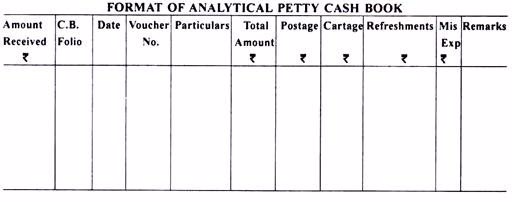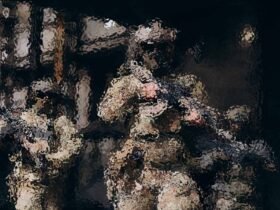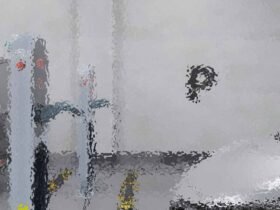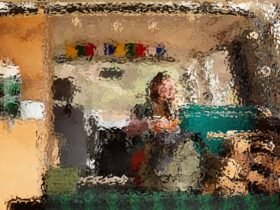Operation of the Petty Cash Book
Determine the operation of the petty cash Book
Petty Cash Book:
Petty cash book is a kind of cash book which records large number of small payments such as conveyance, cartage, postage, telegrams and other expenses under the imprest system. These expenses are repetitive in nature. The procedure becomes cumbersome if all small and repetitive payments are handled by the main cashier and are recorded in the main cash book.
The cash book may become very bulky and the cashier may be overburdened.
Applying the rule of ‘management by exception’ the main cashier should
not be disturbed for small and petty items.
Applying the rule of ‘management by exception’ the main cashier should
not be disturbed for small and petty items.
Big
organizations normally appoint one or more cashier known as ‘Petty
Cashier’ and assign the handling of petty expenses. Sometimes the work
of handling small and petty expenses is assigned to an existing employee
who in addition to his normal duties maintains a separate cash book to
record these petty and small cash transactions. For this purpose petty
cash book is to be maintained by such employee. The petty cashier so
appointed for recording the small and petty expenses works on the
imprest system.
organizations normally appoint one or more cashier known as ‘Petty
Cashier’ and assign the handling of petty expenses. Sometimes the work
of handling small and petty expenses is assigned to an existing employee
who in addition to his normal duties maintains a separate cash book to
record these petty and small cash transactions. For this purpose petty
cash book is to be maintained by such employee. The petty cashier so
appointed for recording the small and petty expenses works on the
imprest system.
Difference between Cash Overage and Shortage
Distinguish between cash overage and shortage
Situation
in which the physical amount of cash on hand differs from the book
recorded amount of cash. When a business is involved with
over-the-counter cash receipts, occasional errors may occur in making
change. The cash shortage or overage is revealed when the physical cash
count at the end of the day does not agree with the cash register tape.
Assuming that the count is Sh.60000 and the cash register reading shows
Sh.62000, the cash shortage and overage account would be charged for
2000. It is shown in the income statement.
in which the physical amount of cash on hand differs from the book
recorded amount of cash. When a business is involved with
over-the-counter cash receipts, occasional errors may occur in making
change. The cash shortage or overage is revealed when the physical cash
count at the end of the day does not agree with the cash register tape.
Assuming that the count is Sh.60000 and the cash register reading shows
Sh.62000, the cash shortage and overage account would be charged for
2000. It is shown in the income statement.
Meaning and Implication of the Imprest System and Petty Cash Vouchers
Explain the meaning and application of the imprest system and petty cash vouchers
Imprest System:
Under
the impress system, a fixed amount say Rs. 5,000 is given to the petty
cashier for incurring small and petty expenses. This amount is called
imprest money. The petty cashier makes all the payments for which he is
authorized out of the imprest amount. After a specific period or as soon
as he exhausts the full imprest amount, whichever is earlier, he gets
reimbursement for the actual amount spent by him from the main cashier.
the impress system, a fixed amount say Rs. 5,000 is given to the petty
cashier for incurring small and petty expenses. This amount is called
imprest money. The petty cashier makes all the payments for which he is
authorized out of the imprest amount. After a specific period or as soon
as he exhausts the full imprest amount, whichever is earlier, he gets
reimbursement for the actual amount spent by him from the main cashier.
Thus
at the beginning of the next period he once again has the full imprest
amount. Keeping in view the quantum of amount involved and frequency of
transactions, reimbursement of amount is made on a weekly, fortnightly,
monthly basis. Sometimes the petty cash system is operated through the
main cash book and in that case petty cash book is not maintained
independently.
at the beginning of the next period he once again has the full imprest
amount. Keeping in view the quantum of amount involved and frequency of
transactions, reimbursement of amount is made on a weekly, fortnightly,
monthly basis. Sometimes the petty cash system is operated through the
main cash book and in that case petty cash book is not maintained
independently.
Advantages:
- Reduces the labour: Petty
cash book is based on the division of labour and works on imprest
system; hence, it reduces the work and labour of main cashier. - Controls irregular expenses: One
of the famous principles of management is ‘control by exception’ which
means that if one person tries to control everything, he may end up
controlling nothing. Based on this principle, a petty cashier is
appointed who can control the irregular expenses. In the absence of
petty cashier, it is very difficult to watch and control the necessities
of incurring any expenses. - Main cash book does not become over bulky: Petty
cash book helps to keep the main cash book in a compact form because
numerous entries for small and petty items are recorded in the petty
cash book itself. - Quick payment possible: In
petty cash book, payments for petty items are recorded. Though they are
small, yet they are essential. Sometimes they are so urgent that they
cannot wait for approval of the higher authority. In that case quick
payment is required and this can be made by the petty cashier.
Sorting out Different Petty Expenditures and the Technique of Recording them in the Petty Cash Book and Journals
Sort out different petty expenditures and the technique of recording them in the petty cash book and journals
Types of Petty Cash Books:
There are the two methods of preparing petty cash book:
- Simple Petty Cash Book
- Analytical Petty Cash Book or Columnar Petty Cash Book
I. Simple Petty Cash Book:
In
simple petty cash book there is one column each for recording of
receipt of cash from the main cashier and for payment of petty expenses.
‘Date’ and ‘Particulars’ column is same for receipts and payments. In
the ‘C.B. Folio’ column, page number of cash book in which payment to
petty cashier is made is to be recorded.
simple petty cash book there is one column each for recording of
receipt of cash from the main cashier and for payment of petty expenses.
‘Date’ and ‘Particulars’ column is same for receipts and payments. In
the ‘C.B. Folio’ column, page number of cash book in which payment to
petty cashier is made is to be recorded.
In
the particular column heads of the items are to be mentioned. In ‘V
.No’ column, voucher number of the transactions are recorded. ‘L.F.’
column shows where the posting of these items have been made in
respective ledgers. ‘Amount’ column shows the money value of the
transactions.
the particular column heads of the items are to be mentioned. In ‘V
.No’ column, voucher number of the transactions are recorded. ‘L.F.’
column shows where the posting of these items have been made in
respective ledgers. ‘Amount’ column shows the money value of the
transactions.
The format of simple petty cash book is as under:
II. Analytical Petty Cash Book:
Analytical
Petty Cash Book or Columnar Petty Cash Book is different from the
simple petty cash book in the sense that in this type of petty cash
book, an analytical presentation of cash payment is made. All petty
payments are to be classified into different heads and different columns
are maintained.
Petty Cash Book or Columnar Petty Cash Book is different from the
simple petty cash book in the sense that in this type of petty cash
book, an analytical presentation of cash payment is made. All petty
payments are to be classified into different heads and different columns
are maintained.
The format of the analytical petty cash book is as under:

Explanations to the Various Columns & Balancing the Analytical Petty Cash Book:
Receipts
are recorded in one amount column on the receipts (debit) side known as
‘Amount Received’ column. However, for recording receipts and payments
the column for date, voucher number and particulars are common. For
recording petty expenses, petty cash book has one column on the payment
(credit) side which is known as ‘Total Amount’ column.
are recorded in one amount column on the receipts (debit) side known as
‘Amount Received’ column. However, for recording receipts and payments
the column for date, voucher number and particulars are common. For
recording petty expenses, petty cash book has one column on the payment
(credit) side which is known as ‘Total Amount’ column.
In
this column total of various expenses paid by same voucher and on the
same day are recorded at one place. The total amount column is followed
by number of columns for recording the heads of items which are most
common in the business enterprise.
this column total of various expenses paid by same voucher and on the
same day are recorded at one place. The total amount column is followed
by number of columns for recording the heads of items which are most
common in the business enterprise.
After
allotting the columns to most common heads, one column is allotted for
recording miscellaneous items which are known as “Miscellaneous’ column.
Payments for which a separate column does not exist are recorded in
this column.
allotting the columns to most common heads, one column is allotted for
recording miscellaneous items which are known as “Miscellaneous’ column.
Payments for which a separate column does not exist are recorded in
this column.
The
last column is allotted for ‘Remarks’. The nature of payments is
recorded in this column. All amount columns are totaled at the end of
the period. The total amount spent and the amount reimbursed shall be
shown in the total amount column.
last column is allotted for ‘Remarks’. The nature of payments is
recorded in this column. All amount columns are totaled at the end of
the period. The total amount spent and the amount reimbursed shall be
shown in the total amount column.
Illustration 3: (Petty Cash Book)
Sharma
Sports Goods Co. follows the imprest system of petty cash under which,
Rs 6,000 was handed over to the petty cashier as on 1st March 2011.The expenses during the month were as follows:
Sports Goods Co. follows the imprest system of petty cash under which,
Rs 6,000 was handed over to the petty cashier as on 1st March 2011.The expenses during the month were as follows:


Format of the Three Column Cash Book:

Example of Three Column Cash Book:
| 1991 | |
| Jan.1 | Purchased office typewriter for cash $750; cash sales $315 |
| “ | Deposited cash $500 |
| ” 4 | Received from A. Hussan a cheque for $2,550 in part payment of his account |
| ” 6 | Paid by cheque for merchandise purchased worth $1,005 |
| ” 8 | Deposited into bank the cheque received from A. Hussan. |
| ” 10 | Received from Hayat Khan a cheque for $775 in full settlement of his account and allowed him discount $15. |
| ” 12 | Sold merchandise to Divan Bros. for $1,500 who paid by cheque which was deposited in the bank. |
| ” 16 | Paid Salman $915 by cheque, discount received $5 |
| ” 27 | Paid to Gulzar Ahmad by cheque $650 |
| ” 30 | Paid salaries by cheque $1,750 |
| ” 31 | Deposited into bank the cheque of Hayat Khan. |
| ” 31 | Drew from bank for office use $250. |
You are required to enter the above transactions in three column cash book and balance it.
Solution:





















What a information of un-ambiguity and preserveness of precious experience concerning unpredicted feelings.
Thank you for sharing your thoughts. I really appreciate your efforts and I am waiting for your further post thanks
once again.
Hi there, I do think your blog may be having web browser compatibility problems.
When I look at your web site in Safari, it looks fine however,
if opening in I.E., it has some overlapping issues.
I simply wanted to provide you with a quick heads up! Aside from that, great blog!